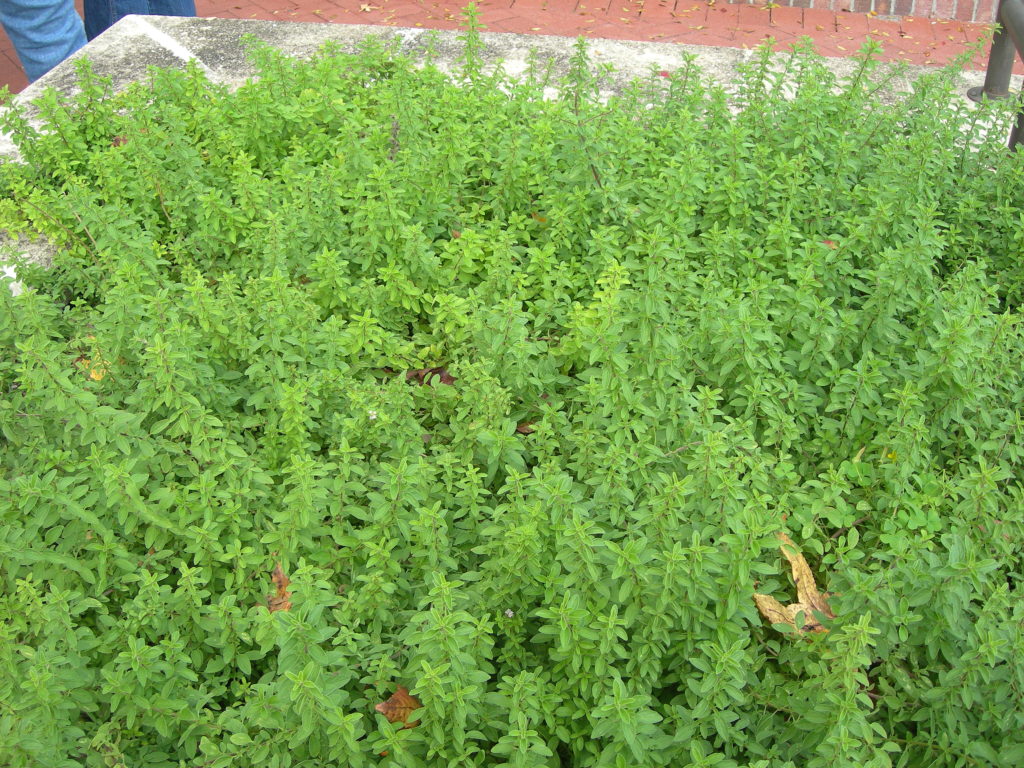Herb gardening is a popular pursuit. Many gardeners and cooks have at least a few pots of herbs sitting around. What if this year, you plant a portion of the veggie garden, a new landscape bed, or several large containers with herbs? Plant herbs this fall everywhere.

Herbs add flavor and spice, pun intended, to our kitchens and gardens. They have many uses, from the well-known seasoning to infused vinegar for salads and household cleaning to tinctures and homemade incense. Some even attract butterflies. Planting and growing herbs are satisfying and productive.
The procedure for growing herbs is akin to growing vegetables. Herb gardens can be installed where there are 6 – 8 hours of sun and a water source. For container gardens, just about any container with drainage can be used to grow herbs; let your imagination go. The soil should be fresh and clean, and well-drained. A 40-pound bag of potting soil is a quick way to set up a garden. Just cut a few holes in the bottom, and the bag will grow an herb garden. One full of fennel, parsley, and garlic chives is as helpful to butterflies as it is to your kitchen.
For in-ground gardens, full sun and good drainage are best. The herb garden can be set up in traditional rows or employ a more intricate planting scheme such as a complex herb knot garden. Check out The Herb Society of America and the University of Florida’s Gardening page about herbs for more information.
Here are a few tips, tricks, and ideas about individual herbs and growing herbs to get you started and thinking.
Low-volume irrigation or a “drip system” is a good choice for Florida gardens. Drip irrigation is efficient and reduces runoff for herb gardens and containers; they use less water to produce beautiful plants. Easy to install kits are available at local nurseries and garden centers.
Group herbs by water needs in pots and in the garden. Water-loving herbs include lemongrass, basil, cilantro, tarragon, and parsley. Other herbs that prefer well-draining and drier soils include chives, oregano, sage, rosemary, thyme, bay, marjoram, borage, fennel, feverfew, germander, and lemon balm.
Use creeping thyme, oregano, or creeping rosemary as filler plants between stepping stones, in pavers, and around the edge of containers. They are fragrant, beautiful, heat and drought tolerant, somewhat wear-tolerant, and edible.
Use the whole landscape for herbs and veggies. Plant low-growing herbs in annual beds; they are beautiful and provide for the table. Creeping rosemary makes a lovely low and slow-growing shrub for dry, sunny spots. Violas and nasturtiums have beautiful blooms which can be harvested for salads and elegant dessert garnishes and can be used to outline borders and shrub areas.
An excellent present for anyone is a beautiful hanging basket planted with favorite flowers and herbs. Be sure to include a container of slow-release fertilizer, a drip irrigation kit, or two to keep the basket healthy.
Lemongrass is a popular herb used in Thai cuisine and makes a tasty addition to that truly southern delight, ‘sweetea’ and the garden. Plant lemongrass in full sun to partial shade, either in moist soil or in a location with access to regular irrigation. However, many gardeners prefer to grow lemongrass in a pot to control its spread due to its running nature.
This article first appeared in the Treasure Coast Newspapers.
Leave a Reply